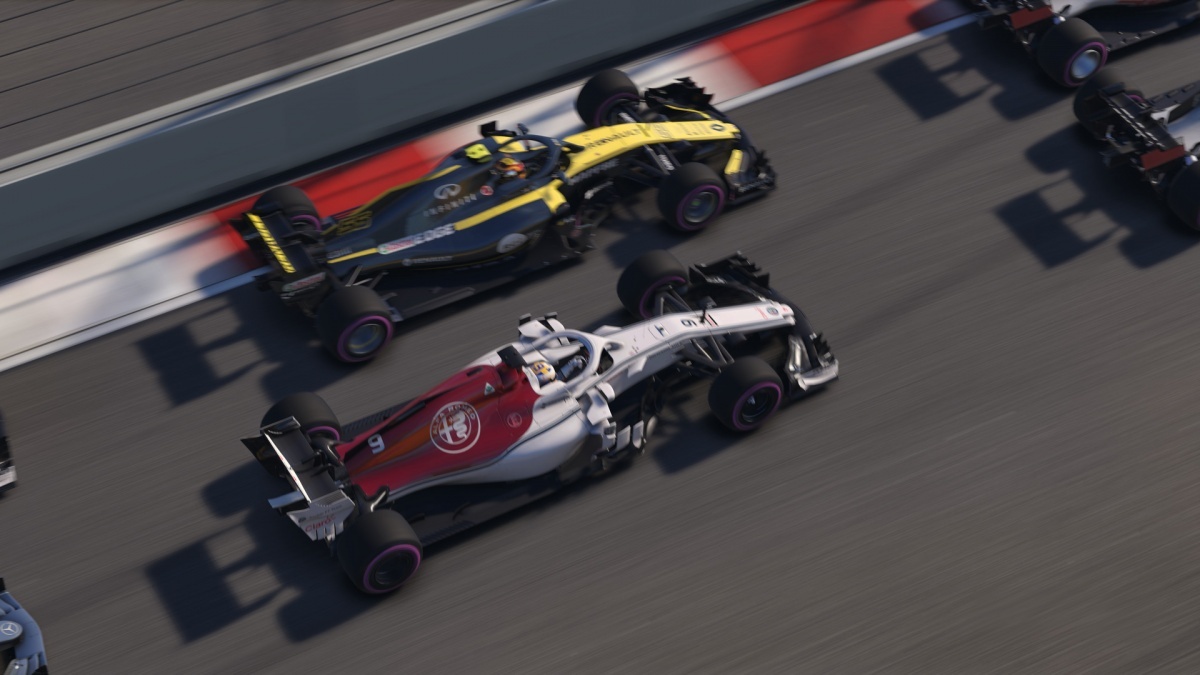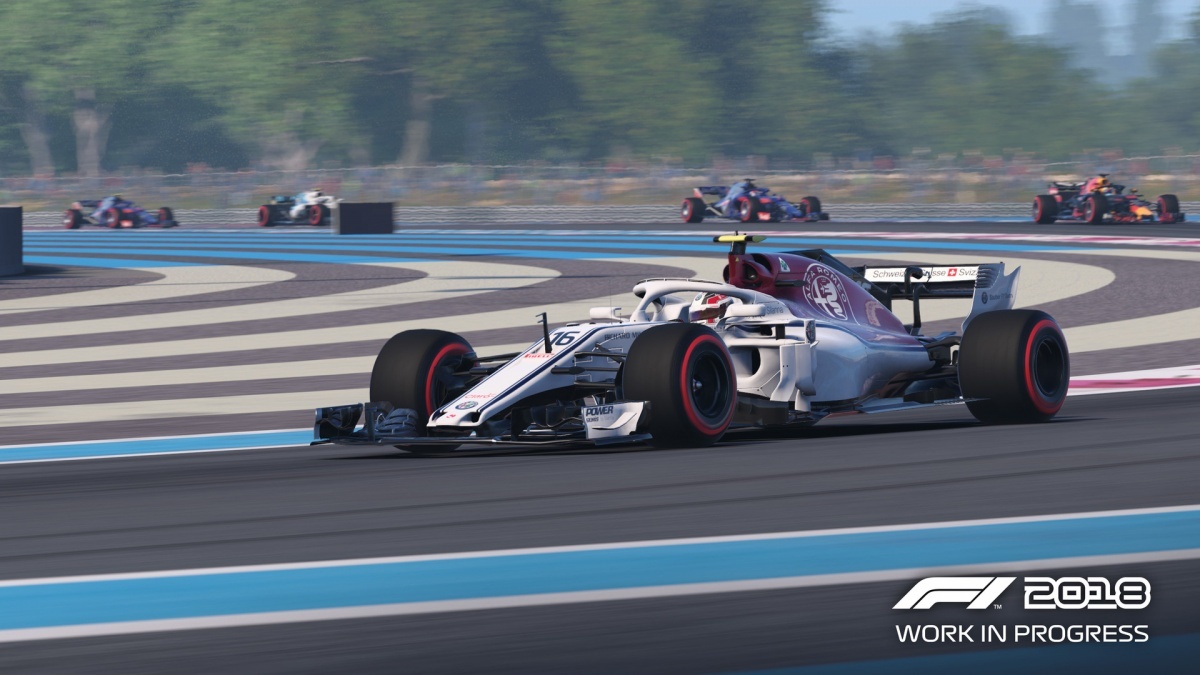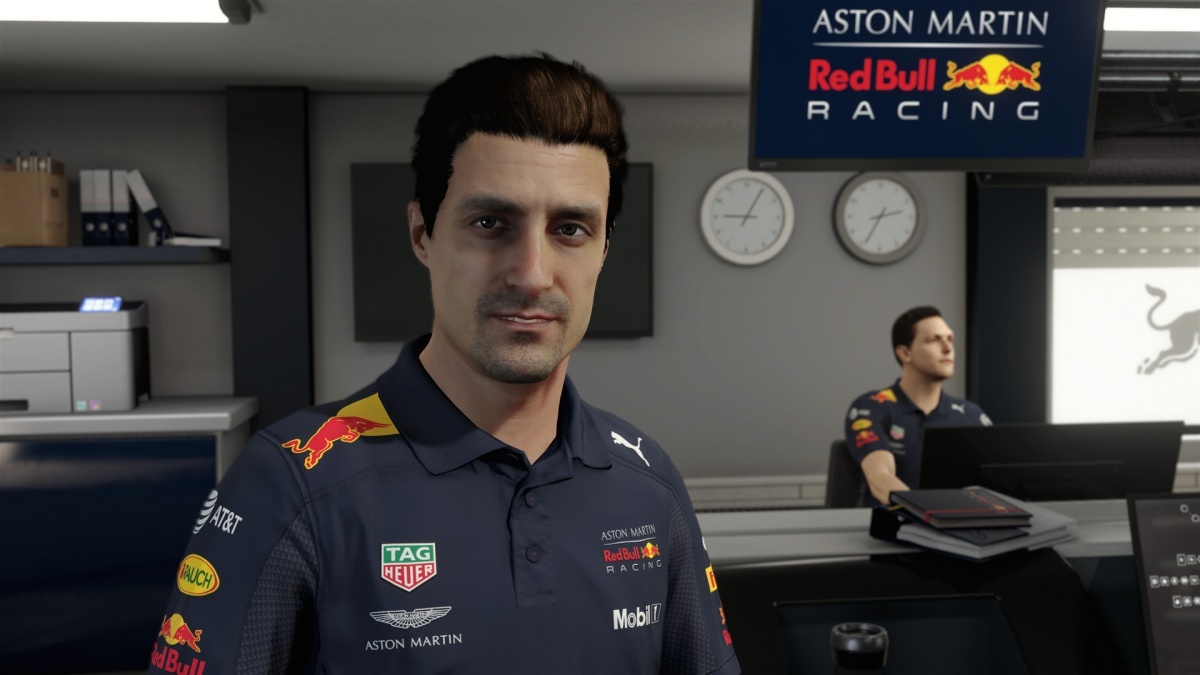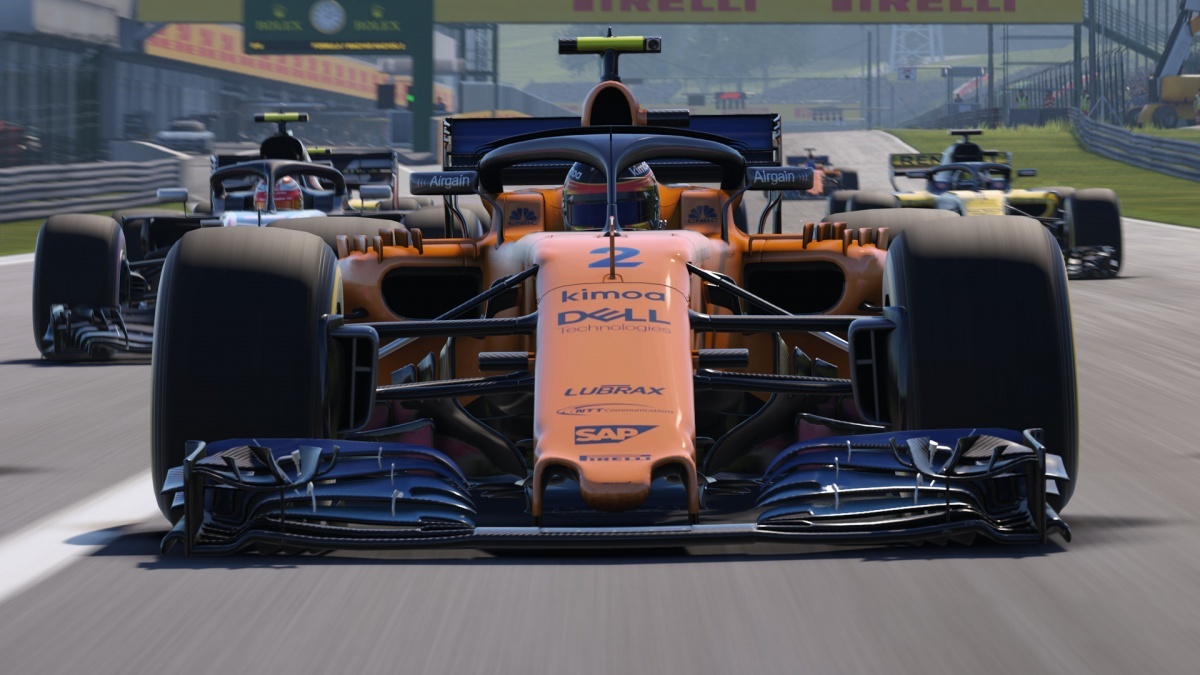F1 2018 (PlayStation 4) Review
By Tomas Barry  05.09.2018
05.09.2018

Over the decades, the official Formula 1 licence has been stewarded by multiple different developers, including EA and Sony. However, nobody has sat in the driver's seat for quite as long as Codemasters. F1 2018 is its tenth consecutive entry in the franchise, which spans two generations' (or so) worth of consoles, in addition to several iterations on handheld devices, like 3DS and Vita. Considering its lengthy tenure behind the wheel, it's fair to say that consumers know what to expect from a Codemasters F1 title. They are visceral, yet accessible, affairs that vie to provide an authentic race experience without muscling out either the casual audience or sim-racers. Fans can send it like Ricciardo on a pad, from the comfort of their couch, while those with dedicated sim-rigs still get an accurate enough impression of what it's like to wrestle with these insane modern machines.
Sadly, this division of emphasis does dilute the experience for certain parties. Producing a 'sim-cade' may be the best way for an officially licenced racing series to appeal to the broadest range of its target audience, but it tends to leave sim-racing enthusiasts feeling a little short-changed. It's all well and good being accommodating to drivers of varying skill-levels but, invariably, widening the net squanders some of the higher potential for a deeper and more realistic racing experience. Like a slightly bent front-wing, losing the driver three-tenths through every sector, it simply restricts and limits what's obtainable. This partly explains why racing titles with realistic exteriors but a middle-of-the-road approach to technical authenticity, like Forza Motorsports and Gran Turismo, get so much resentment from sim-racers. In their view, fully committing to a simulative experience would make those titles so much better and more rewarding.
Recent entries in Codemasters' Formula 1 series, particularly F1 2015, '16 and '17, have taken some measures to appease the hardcore fans, and sim-racing fans at large, who seek something more challenging and more accurate than what's been available in the series previously. These entries introduced many fundamental gameplay changes, from better force-feedback and proper tyre-degradation, to improved physics and far more reliable engine audio. These things have improved the racing experience drastically. However, on balance, Codemasters still seems to have a curiously reserved attitude when it comes to achieving something more meaningful in the simulative domain. The fact that it only makes progress in staggered and incremental steps, like all annual franchises, is certainly a complicating factor. This probably only further encourages the team to straddle the line between a sim and an arcade experience, even though, at this point, it might be better off committing to a headfirst dive.
Unfortunately, until Codemasters is willing to risk alienating some of its more casual audience, it remains the case that the dedicated racing simulators, like Assetto Corsa, iRacing and rFactor 2, each of which feature just a small selection of vehicles from the series, will provide the most realistic representation of what it's like to drive and race a Formula 1 car. This is not a fundamental issue in and of itself, but it is a crying shame that the official F1 experience only has half-hearted aspirations of achieving this feat. While promotional footage may contradict this review, there is no pretending that Max Verstappen or Lando Norris are sat in their sim-rigs at home, sharpening their skills via F1 2018. Largely thanks to streamers and eSport competitions, the sim-racing genre is now more popular than ever, and it feels like the developer could up the ante rather than proceeding with an air of caution.

With all that said, F1 2018 does seem to be a reasonable culmination of Codemasters' recent efforts to become more competitive with these sim-based experiences. Cubed3 tested the game with a set of standard Logitech G29 wheel / pedals, and there are definite improvements to report in certain areas. Last year's entry improved the overall strength and sense of detail from the force feedback, making some slips finally catchable and kick-outs a bit more predictable. F1 2018 steps things up another notch, making some subtle but welcome tweaks. It's easier to ascertain how much grip is available without having a wobble, and although not all the forces at play are as interpretable as they should be, you can feel the downforce and details of the track through the wheel a little more this time around. Unfortunately, tyre degradation, while also improved, still isn't conveyed as clearly as it could be. That's one key area that would benefit from a clear commitment to simulation standards.
In terms of core gameplay, there are several other changes worth flagging up. The last couple of iterations, at least on consoles, have suffered from varying input lag issues. Not only does this make life more difficult than it ought to be in various circumstances, it made the handling feel a sluggish and a little imprecise. F1 2018 has all but eradicated this problem. If there is any input lag, it's negligible. That's really tightened things up. The wheel feels much snappier and responsive, improving the overall quality of the driving experience considerably. Now, when you end up in The Wall of Champions, drivers only have themselves to blame… or perhaps not, because there are several other reasons why that might occur.
For one thing, players can now manage functions like brake bias and ERS manually. This can be a little fiddly when changing things via the display, but it works well using mappable face buttons on the wheel. It's amazing to think real world Formula 1 drivers are constantly adjusting these elements on the fly. It's hard not be distracted when trying to fine tune this or that, especially on the tight and bendy tracks that don't have many straights. Players can set these options to adjust automatically should they view it as a challenge too far, but it's fantastic for authenticity that managing these aspects of the car is possible. The only drawback is that there doesn't seem to be a way to engage the highest mode with one button press, instead one must filter through the modes to reach it.

F1 2018 is the also first title in the series to feature the halo. This safety device has the potential to cause a lot of difficulties, just as it can do in real life. The main supporting arch cuts right down the central field of vision, and that significantly limits what can be seen from a first-person perspective. It arguably presents more of a challenge for players using the first-person cockpit view than it does for real F1 drivers, since they can at least look around freely. In the game, it's unnaturally restrictive because the rigid perspective doesn't allow players to peak or look around. Of course, this would be solved for some if this year's edition supported VR, but unfortunately it doesn't. The saving grace is that Codemasters has included an option to remove the central pillar, so drivers get a better central field of view. That's a wise choice, because the other camera perspectives are considerably less immersive, and could be a make or break for some.
The behaviour of AI drivers has also been tweaked considerably. Previously they lacked aggression, rarely dipping out of the racing line to unsettle someone or being opportunistic and going for a gap. This time round, they are far more willing to challenge those ahead. Drivers will see duels occurring all around them, rather than feeling like they themselves are the only ones triggering them, as was the case in older editions. The caveat to this overhaul is that, if anything, they have jumped from one extreme to the other. AI drivers are now perhaps too aggressive, and while single-player races certainly feel more dynamic and lively, you seldom see them think better of a move and back out. This inevitably leads to a lot of incidents where a race is compromised by someone being ridiculously ambitious, on the hardest corner of the track. The AI should be able to exercise self-restraint on occasion, as it's more believable. That said, if it's a case of one or the other, this is still the better of the two extremes.
In terms of physics, Codemasters claims to have implemented totally new systems in certain areas, but not many of them bring any truly evident improvements. The new suspension physics are probably the most successful development, with a much more realistic feel and a better, more believable relationship between tyres and track. It's subtle, but more noticeable when comparing the handling of the modern vehicles with the classic ones, which there are plenty more of this year, featuring much less grip and aero. Disappointingly, in terms of damage and collisions, the physics are still quite lacking. Even when set to simulative, on numerous occasions during testing clipping a wall and getting off scot-free occurred, when a tyre should have been lost and massive damage inflicted. On other occasions, this kind of mistake incurred realistic repercussions, but it's the lack of physical consistency in crashes and incidents that's most infuriating. As it stands, this is probably one of the major flaws in the official F1 series, holding it back from achieving a higher level of realism and authenticity.

In terms of its content, F1 2018 is packed to the brim. The career mode has been polished for the better in various departments. The returning research and development skill-tree is much more fleshed out and choices made there seem to have more influence on the driver and team's season than ever before. This makes picking the lesser teams and setting one's sights on a meteoric rise that much more enticing and enjoyable. Practice sessions are also a little more dynamic, tasking the driver with objectives, such as testing performance in certain modes, which generates extra research and development tokens. It's just a shame that there's not enough variety to these test sessions, as they quickly become a little repetitive. Fortunately, these events can be skipped without losing out on R&D credits, which becomes tempting after a while.
This year's edition also features a rival system. Initially, the player's only rival will be their team-mate, which makes sense, but after reaching a certain point in the season, they are then asked to pick an additional rival. This is an interesting choice, but perhaps it would be better if the second rival emerged organically, based solely on the championship picture, or because of particularly significant racing incidents. While most of the changes to the career mode are welcome, one addition is particularly annoying. The player will now be chased down, after races and other sessions, by a generic journalist with a typical array of tedious sporting questions. The answers provided supposedly affect the status within the team and the F1 paddock at large. However, they don't have a meaningful impact on anything, unless a few meagre pluses and minuses on stats count. Also, for some unknown reason, there's only about ten seconds to read the question and respond with one of four answers. It's simply not enough time to read it all, and renders the whole thing even more pointless.
Beyond the main career mode, players can simulate the full 2018 race calendar, without all the additional bells and whistles, if they prefer. There's also a surprisingly extensive volume of smaller race collections to work through, each of which has a particular focus; for example, there's a series that only features tracks from mainland Europe, and several focusing on specific eras of classic cars. This fleshes out the single-player experience substantially. Elsewhere, on the multiplayer side of things, F1 2018 finally integrates a safety rating system, similar to those seen in racing simulators like iRacing. This allows players to earn a super licence, and it's a system that was needed, given the popularity of the official F1 franchise's eSports tournament. Unfortunately, Cubed3 wasn't able to test out the online experience prior to release, but that will be followed up post-launch.

Cubed3 Rating
Very Good - Bronze Award

F1 2018, unsurprisingly, is better than last year's outing. There are no drastic overhauls to speak of, but thanks to another array of tweaks and minor additions, it's the best F1 title to date. Its biggest strength is in the single-player domain. The career mode features a lot of unique elements, like the R&D skill-tree, which can't be found elsewhere, and it successfully approximates what it's like being a championship-pursuing Formula 1 driver. However, in terms of its fundamentals, despite the improvements to AI behaviour, the force feedback, and advanced elements such as tyre-degradation, this remains too much of a work-in-progress. F1 2018 will likely test the patience of the sim-racing side of its audience, who have increasingly high standards. Ultimately, whilst being drip-fed improvements in incremental fashion, it seems unlikely that Codemaster's F1 franchise will make any grand leaps towards meeting the lofty standards set by dedicated racing simulators.

![]() 7/10
7/10
![]() 0
(0 Votes)
0
(0 Votes)
 Out now
Out now  Out now
Out now  Out now
Out now  Out now
Out now Comments
Comments are currently disabled

 Sign In
Sign In Game Details
Game Details Subscribe to this topic
Subscribe to this topic Features
Features





 Top
Top

